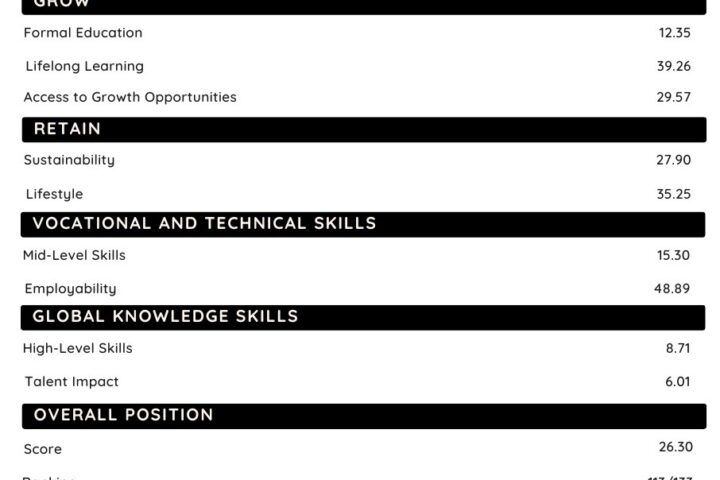For quite some time now, I have held this strong opinion that nothing good has ever come from either Pakistani chartered accountants or policymakers. This was validated yesterday when the Ministry of Information Technology and Telecommunication and PwC published “A Roadmap for the IT/ITeS Growth”. Without exaggeration, it is among the laziest pieces of research — something that an average sophomore would put together a night before the deadline.
Half-assed strategy documents that barely scratch the surface of the underlying topic aren’t exactly a new concept in Pakistan. Just a while ago, there was the National AI Policy that neatly fits the bill. But in hindsight, it looks like solid work. Maybe there should be an inter-departmental challenge for who can produce the shoddiest quality of work? As always, the winner gets taxpayer money while the country loses.
Before I get into the specifics (oh wait, there are none), let me just get one thing very clear: this is an op-ed and is meant to be opinionated. And I, for one, have no time for niceties while those in power continue to waste taxpayer money on meaningless stuff. The goal here is not constructive criticism. We’re way past that point and there have been no takers for that. Especially if you go by the teen angst tweets of a certain caretaker minister whose reaction to all the pushback has been talking about how HATERS GONNA HATE.
Anyway, now let’s turn to the roadmap and see just how awful the whole exercise is.
For starters, just 10 out of the 18 pages have any material. The remaining 8 include the title, disclaimer, back cover, four different forewords, and the table of contents. This is some serious undergrad energy, including the tacky design. To be honest, it doesn’t really matter because the part with the roadmap is as good as blank.
Take the summary page that lists some key numbers so let’s address them all. First of all, it cites Information Technology exports of >$1.8B in FY21. How incompetent do you have to be to use data outdated by two years, especially for such a high-growth sector. Not to mention that the SBP website has data as of October. In Excel. Just download the updated file for God’s sake.

In the same breadth, that box states “IT Export revenues being generated are greater than the $1.8bn received in remittances by the SBP in 2020/21”. Unless I am missing something substantial, they are referring to the remittances sent by overseas Pakistanis and literally comparing an annual number with a monthly figure. That’s either mind-numbingly stupid or deliberately misleading. Take your pick whichever one’s better.
Then, the document notes the size of the IT workforce to be 316K strong. Though not mentioned in the source, this number is taken from the Labour Force Survey of 2018-19, based on Information and Communication Technology’s 0.46% share. I know this because I remember the data by heart and have extensively modeled on top of it.
While technically accurate, albeit outdated, the interesting bit here is that LFS from FY19 puts the absolute size of the IT workforce lower than what was in FY18: 316,250 versus 340,600. Now of course there’s no way on earth that can be true even without turning to any data. Some things are just that obvious. But I need to do justice to the name of my startup so let’s sample a few numbers.
First of all, Pakistan was producing ~20K new IT grads annually, and assuming even 75% of them joined the sector, it translates into a modest increase of 4.4% growth. And the sector doesn’t just comprise technical people so the number will be inevitably bigger. Secondly, 1,585 new IT companies were incorporated in FY19, so the workforce would’ve at least maintained at last year’s level.
To be fair, this anti-intuitive trend is not necessarily the fault of the Pakistan Bureau of Statistics. At least in this isolated case. It conducted, on paper, a pretty representative survey of more than 40K households and just reported the results as they were. But when the concerned ministry and one of the biggest consulting firms simply reproduce that outdated number without flexing their gray muscles for even a split second, it’s pretty bad.
Funnily, the document ends with the following disclaimer: “The information, materials, analysis, and recommendations contained in this document is intended for informational purposes only . Some of the information may be dated and may not reflect the most current developments. The Pakistan Software Export Board and its consultants, advisers, employees and other aliates expressly disclaim all liability in respect to actions taken or not taken based on information contained or missing in this publication. Each recipient should make its own independent assessment of the merits of relying on this publication and should obtain legal, financial, tax and other professional advice, if needed.” At least there’s some self-awareness.
Similarly, the report mentions 12K businesses without elaborating on it. Assuming the reference was to total IT companies, this number feels a bit off. Mainly because since FY16, Pakistan has seen the incorporation of 17K+ entities in the sector. Sure, some close down too but based on overall trends, that rate isn’t as high as almost a third.
Unfortunately, the rest of the document is no better. Part of it is just throwing around global opportunity size in specific sectors, ironically starting with blockchain. The other half is a wish list, plain and simple, with recommendations probably written by ChatGPT. I don’t have it in me to elaborate any further so just read this great plan on “how to make Pakistan a Global IT Hub”.

And then there are the strategy components. The first person to actually explain what those initiatives are for Pakistan will get dinner from me. Right after that is the long list of key interventions in the roadmap. But just bullet points, for the most part, stripped of any detail or context, such as “compliance”. Finally, they cite three success stories, boasting about their impressive growth without actually quantifying that one bit.

The most perplexing part is how the people involved thought it needed a dedicated launch event. Forget the expenses, how on earth did they even muster up the confidence to associate themselves publicly with this project. I get it, you have to run the kitchen and are just winging it. We have all been there. I have done lots of subpar work too that I would love to erase from the face of the internet. But to go and brag about it? That’s embarrassing.
On a serious note, this is so utterly disappointing because the ministry’s roadmap should be THE policy document. To understand the sector, its structure, and opportunity, refer to data, key drivers, and so on. They had the organizational bandwidth, regulatory pull, industry support and still managed to squander everything away. But who cares, definitely not those in power.



Great insight. Loved your article.
“they are referring to the remittances sent by overseas Pakistanis and literally comparing an annual number with a monthly figure.”
I don’t see the annual vs monthly comparison in that box. $1.8B was annual remittance received under the IT/ITES code. Where is the monthly figure that they are comparing with?
The IT minister is just a show off, a noon-leak tout with no vision or capacity to do any good to the poor IT industry of Pakistan. They are all here to bloody waste taxpayers’ money. What a sad state of affair!
The author of the article went too far in enthusiasm. Not to say the report has much merit.
Excellent analysis but unfortunately will fall on deaf ears.
Once I was there. This ministries need a lot of governance and action on many indicators. What the regular IT ministerial officers and staffs are doing with the workforce of IT (developers and implementers) will make you mad because they need personal benefits. Recruitment process just formalities and favourite candidate supersedes actual. Very few hired inorder to run the office The genious and talented will not stay long with them and they are being force to leave the country. So its Pakistan every office has a story and believe me its worst.
We makes rule inorder to break another.
We dont have any sustainable policy.
Some departments need to be reshaped and some are useless just liabilities. But I can’t see any near revolution in the country because we had other properties.
Priorities
Excellent analysis!
Outdated data and wrong numbers obviously is an issue.
Just one point, your commentary is on the summary document that is available publicly.
After this write up, they may send you the complete document which may or may not change your views 🙂
Though, obviously summary document should be compelling , but an opinion can not be formed on the entire strategy based on the bullet points in the summary document.
When this piece was written and published, the ministry was touting it as THE report. After criiticism, they changed the semantics to “marketing collateral”. That said, I certainly look forward to reading the detailed strategy and change opinion in light of new information.